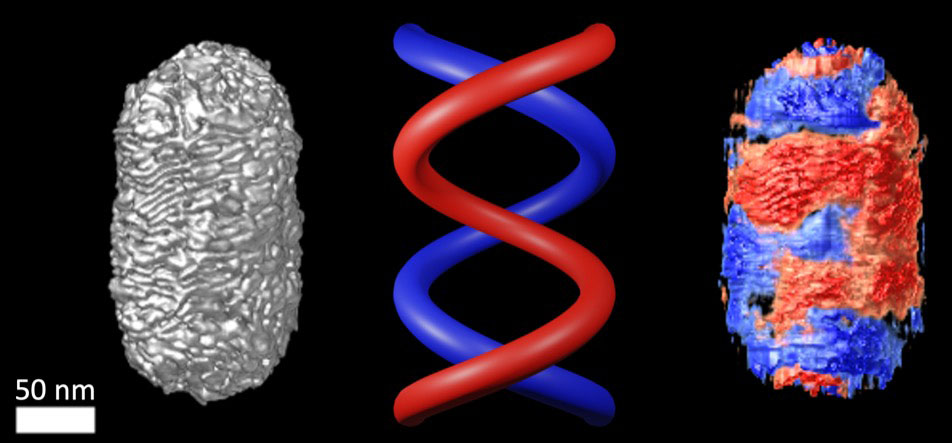Chirality in Nanotechnology: Understanding Asymmetry at the Nanoscale
What is Chirality?
Chirality is a fundamental property of asymmetry in nature, where an object or molecule cannot be superimposed onto its mirror image. In the context of nanotechnology, chirality refers to the asymmetric arrangement of atoms or nanostructures, leading to unique properties and interactions. Understanding and controlling chirality at the nanoscale is crucial for various applications, including drug development, catalysis, and materials science.

How Chirality Affects Nanomaterials
Chirality plays a significant role in nanotechnology due to its influence on the properties and interactions of nanomaterials:
- Chiral Nanomaterials Properties – Optical: Chiral nanostructures exhibit unique optical properties, such as circular dichroism and optical activity. These properties arise from the differential interaction of chiral nanomaterials with left and right circularly polarized light, enabling applications in optical sensing, imaging, and information processing.
- Chiral Nanomaterials Properties – Electronic: The asymmetric arrangement of atoms in chiral nanomaterials can lead to distinct electronic properties, such as spin-polarized transport and chiral-induced spin selectivity (CISS). These properties have potential applications in spintronics, quantum computing, and data storage.
- Chiral Nanomaterials Properties – Catalytic Activity: Chiral nanostructures can serve as efficient catalysts for asymmetric synthesis and enantioselective reactions. The chiral environment provided by the nanostructures can enhance the selectivity and yield of desired products, making them valuable in the pharmaceutical and chemical industries.
- Chiral Nanomaterials Properties – Molecular Recognition: Chiral nanomaterials can selectively interact with chiral molecules, such as proteins and drugs, through specific chiral recognition mechanisms. This property is crucial for drug delivery, biosensing, and the development of chiral separation techniques.
Synthesis and Control of Chiral Nanostructures
Controlling chirality at the nanoscale is essential for harnessing the unique properties of chiral nanomaterials. Several strategies have been developed to synthesize and manipulate chiral nanostructures:
Chiral Template-Directed Synthesis
Chiral templates, such as DNA, proteins, and supramolecular assemblies, can guide the growth and organization of nanostructures into chiral configurations. By utilizing the inherent chirality of these templates, researchers can synthesize chiral nanoparticles, nanowires, and nanotubes with well-defined asymmetry.
Chiral Ligand-Mediated Synthesis
Chiral ligands, such as small organic molecules or peptides, can be used to direct the synthesis of chiral nanostructures. These ligands bind to the surface of nanoparticles or nanocrystals, inducing a chiral arrangement of atoms and leading to the formation of chiral nanomaterials.
Asymmetric Surface Modification
Chiral nanostructures can be obtained by asymmetrically modifying the surface of achiral nanomaterials. This can be achieved through the selective adsorption of chiral molecules or the patterning of chiral nanostructures on the surface, resulting in chiral nanomaterials with tailored properties.
Applications of Chiral Nanomaterials
Chiral nanomaterials have found diverse applications in various fields, leveraging their unique properties and interactions:
Enantioselective Catalysis
Chiral nanostructures, such as chiral metal nanoparticles and chiral metal-organic frameworks (MOFs), have been employed as efficient catalysts for enantioselective reactions. These catalysts can selectively produce one enantiomer of a chiral product, which is essential in the synthesis of pharmaceuticals and fine chemicals.
Chiral Sensing and Separation
Chiral nanomaterials can be used to develop highly sensitive and selective sensing platforms for the detection and separation of chiral molecules. By exploiting the specific interactions between chiral nanomaterials and target molecules, researchers have developed chiral sensors and separation techniques for applications in drug discovery, environmental monitoring, and food safety.
Biomedical Applications of Chiral Nanomaterials
Chiral nanomaterials have shown promise in various biomedical applications, such as drug delivery, imaging, and therapy. Chiral nanocarriers can selectively deliver drugs to specific targets, while chiral quantum dots and upconversion nanoparticles can be used for chiral-selective imaging and sensing in biological systems.
Chiral Nanotechnology Challenges and Future Perspectives
Despite the significant progress in the field of chiral nanotechnology, several challenges remain to be addressed. One of the main challenges is the scalable and precise synthesis of chiral nanostructures with well-defined asymmetry. Additionally, understanding the fundamental mechanisms governing the interactions between chiral nanomaterials and chiral molecules is crucial for designing efficient chiral sensing and separation systems.
Future research in chiral nanotechnology will focus on the development of novel chiral nanomaterials with enhanced properties and functionalities. The integration of chiral nanomaterials with other advanced materials, such as 2D materials and biomolecules, will enable the creation of multifunctional chiral nanostructures for diverse applications. Furthermore, the exploration of chiral nanomaterials for in vivo biomedical applications, such as targeted drug delivery and chiral-selective imaging, will be a key area of investigation.
Further Reading
Nature Reviews Bioengineering, Bioinspired chiral inorganic nanomaterials
